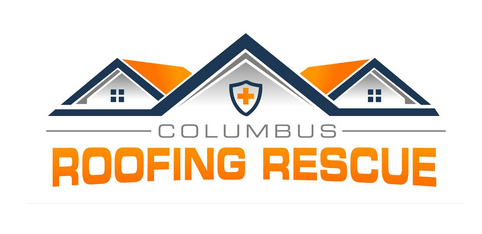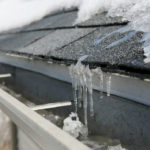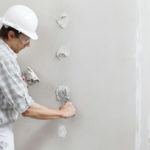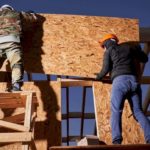
The Different Types of Siding for Your Home
Getting new siding for your home can dramatically improve its curb appeal, raising its resale value. Siding also helps your home stand up to the elements. Moreover, installing insulated siding in your home is an affordable and innovative way to save money long-term and lower your monthly power bills.
Home siding is available in various materials at different prices and offers multiple benefits. On average, it costs about $27,133 to add siding to a 2,500-square-foot home in North America. The size of your home and the kind of siding you select will affect the total cost of your project.
Moreover, now is the best time to get new siding because of the veneer and vinyl siding advancements. These siding options let you create the costlier appearance of cedar shake, brick, and stone without exceeding your budget.
10 Common Types of Siding
When choosing house siding, buy the option that best meets your maintenance and durability needs and your home’s style. Here are 10 of the most popular home siding options today.

Vinyl Siding
Vinyl is America’s most popular home siding option thanks to its affordability, low maintenance, and versatility. It comes in hundreds of color options and various profiles, including vertical and horizontal panels, shingles, shakes, beaded, lap, and fish scales designs.
Vinyl siding only requires an occasional wash to maintain it, and vinyl manufacturers generally provide transferable and lifelong warranties. Most home centers stock vinyl siding.
Vinyl is not only affordable, but it’s also the cheapest to install. You can even dramatically cut installation costs by doing the job yourself. Moreover, it doesn’t need many tools to install.
Vinyl siding is installed only on flat surfaces; you must line your wall with ½ inch-thick of rigid foam board to create a nailing surface.
Natural Wood Siding
Natural wood siding is an eco-friendly option that offers greater curb appeal than most other options. Natural wood gives a home’s exterior a classic look, whether it’s the classic horizontal strips in lap siding, a board-and-batten style, or wood shingles.

The drawbacks of natural wood siding include its high upfront cost and costly maintenance. Natural wood requires sealing and painting every 5-7 years, not to mention inspection for insect damage. When properly maintained, however, it can last very long.
Stucco Siding
Affordable and available in many applications, stucco is a centuries-old popular home siding option. Stucco siding is typically a mixture of cement added to lime or sand. Since stucco can be textured and molded, it creates various architectural styles.
Applying stucco usually involves placing tar paper and galvanized metal screening over a wooden wall, then installing stucco. In addition, stucco is installed on stone or brick surfaces.
Bevel Siding
Also known as lap or clapboard siding, wood bevel siding is also one of the oldest home siding options. Resawing boards make it at an angle to produce two pieces with one edge thicker than the other.

Thanks to their price and durability, the best wood options for this siding are Douglas fir, cypress, spruce, and pine. Redwood and cedar are fantastic options because they can withstand rot naturally but are more expensive.
Wood bevel siding is horizontally installed, with the top piece overlapping the bottom. This siding option is installed on a solid surface like plywood, with a moisture shield between the pieces.
Shake and Shingle Siding
Shakes are less uniform in thickness and appearance and thicker than shingles, but they’re more durable. Shingles have a smooth, consistent appearance and are available in different shapes that catch the eye. Both are made from different woods, with redwood and Western red cedar being the most common options.
Shakes and shingles are installed on a solid surface like plywood, with caulking and finishing on the outside and a moisture buffer between the two. Shake and shingle siding needs occasional maintenance like caulking and painting to protect it from weather damage.
Metal Siding
This house siding choice is perfect for people who want their home’s modern to industrial look. Steel siding offers extra protection from mold, fire, and pests and increased durability, and it also doesn’t warp.
Although metal siding is highly durable, it’s expensive and vulnerable to dents (mainly aluminum siding) or rust (specifically steel siding). The best part about metal siding is that homeowners can rest easy knowing that pesky pets can’t chew through their aluminum or steel siding. Metal siding can also be manufactured to mimic other siding options but with the added advantage of durability.
Engineered Wood Siding
Also known as synthetic, manufactured, or composite wood siding, engineered wood siding comes in embossed or smooth textures and cuts and feels like natural wood.
If you love the appearance of real wood and want to recreate it, engineered wood siding is a less expensive and more durable alternative. Engineered wood siding is used in many modern-style houses to give them a sleek, natural exterior look.
Fiber Cement Siding
Fiber cement siding, as its name suggests, is a mixture of natural cement and wood fibers. It’s an incredibly durable house siding option (often with 50-year warranties), and you can paint it with any color to increase curb appeal.
Fiber cement siding has a higher upfront cost and requires more maintenance than vinyl siding. However, its remarkable beauty and durability more than make up for its steep price.
Brick Siding
In many colors, textures, and sizes, brick siding adds a traditional aesthetic to your home. While the initial installation cost can be quite high ($5-$15 a square foot), this option is extremely durable. Moreover, it won’t burn, rot, or even fade due to extreme weather.
Brick siding requires little to no maintenance within the first 25 years. After that, you should check mortar joints because masonry will likely wear out. Brick siding also naturally insulates your home, helping you lower your monthly power pills.
The Takeaway
Siding is a very important component of any home. When investing in siding, you should choose one that considerably improves your home’s curb appeal, especially in keeping with today’s home styles and trends.
Choose a type of siding that balances functionality and aesthetics well, and consider your local weather. Good luck!



